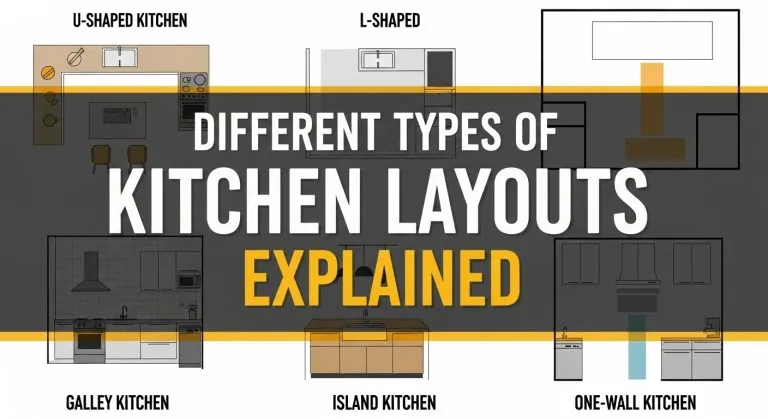Which Roofing Material Lasts the Longest? Guide for Homeowners
Choosing a roofing material is one of the most important decisions a homeowner can make. A roof not only protects your house from the elements but also influences energy efficiency, maintenance costs, and overall property value. Among the many factors to consider—such as aesthetics, cost, and sustainability—longevity is often the most crucial.
A roof is a long-term investment, and the material you choose determines how often you’ll face repairs or replacement. But which roofing material truly lasts the longest? This article explores the history of roofing, compares materials by lifespan, highlights durability factors, and provides insights from building experts.
Why Roof Longevity Matters
- Cost efficiency: A roof with a longer lifespan may have a higher upfront cost but saves money over decades.
- Property value: Buyers often look for durable roofs when evaluating homes.
- Sustainability: Long-lasting roofs reduce waste and environmental impact.
- Peace of mind: Fewer repairs and replacements mean less stress for homeowners.
Historical Perspective on Roofing Materials
- Ancient times: Thatch, clay tiles, and stone slabs were common in Europe and Asia.
- Middle Ages: Slate roofing gained popularity for durability and fire resistance.
- 19th century: Metal roofing became widespread with the rise of industrialization.
- 20th century: Asphalt shingles emerged as an affordable and easy-to-install option.
- Today: Homeowners balance traditional options like slate with modern innovations like composite and solar roofs.
Key Factors That Affect Roof Longevity
- Material type: Natural stone outlasts synthetic materials.
- Installation quality: Even the best material fails if improperly installed.
- Climate: Harsh sun, heavy snow, or high winds accelerate wear.
- Maintenance: Regular inspections and repairs extend life.
- Ventilation: Proper attic ventilation prevents moisture buildup and shingle damage.
Roofing Materials Ranked by Lifespan
1. Slate Roofing (75–150+ years)
- Made from natural stone.
- Extremely durable, fireproof, and low-maintenance.
- Often outlasts the building itself.
- Expensive and heavy, requiring reinforced structure.
2. Clay and Concrete Tiles (50–100 years)
- Widely used in Mediterranean, Spanish, and Southwestern architecture.
- Resistant to fire, insects, and rot.
- Heavy and may crack under impact.
3. Metal Roofing (40–70 years)
- Includes steel, aluminum, zinc, and copper.
- Lightweight, recyclable, and energy-efficient.
- Copper and zinc roofs can last over 100 years with minimal corrosion.
4. Wood Shakes and Shingles (25–40 years)
- Made from cedar, redwood, or pine.
- Naturally insulating and aesthetically appealing.
- Require frequent maintenance and are vulnerable to fire and moisture.
5. Asphalt Shingles (15–30 years)
- Most common roofing material in North America.
- Affordable and easy to install.
- Shorter lifespan compared to premium materials, especially in extreme climates.
6. Synthetic and Composite Roofing (30–50 years)
- Mimic the look of slate or wood at lower cost.
- Lighter weight and more impact-resistant.
- Lifespan varies by manufacturer quality.
7. Green and Living Roofs (30–50 years with proper care)
- Vegetation layer on waterproofing membrane.
- Provides insulation and environmental benefits.
- Requires specialized maintenance.
8. Solar Tile Roofing (25–40 years)
- Dual function: roof covering and energy generation.
- Emerging technology, with improving durability.
- Higher upfront costs and ongoing monitoring needed.
Comparison Table: Roofing Lifespans
| Roofing Material | Average Lifespan | Cost ($ per sq. ft.) | Maintenance Level | Durability in Extreme Weather |
|---|---|---|---|---|
| Slate | 75–150+ yrs | $10–$30 | Low | Excellent |
| Clay/Concrete Tiles | 50–100 yrs | $8–$20 | Low–Medium | Very Good |
| Metal (Copper/Zinc) | 70–100+ yrs | $7–$15 | Low | Excellent |
| Steel/Aluminum Metal | 40–70 yrs | $5–$12 | Low | Very Good |
| Wood Shakes/Shingles | 25–40 yrs | $6–$10 | High | Fair |
| Asphalt Shingles | 15–30 yrs | $1–$5 | Low | Moderate |
| Synthetic/Composite | 30–50 yrs | $4–$9 | Medium | Good |
| Green Roof | 30–50 yrs | $10–$25 | High | Good |
| Solar Tiles | 25–40 yrs | $20–$40 | Medium | Good |
Formula for Roof Investment Value
Roof Value Score = (Lifespan × Durability Rating) ÷ Cost per Square Foot
This formula helps homeowners compare materials not only by how long they last, but also by their long-term cost efficiency.
Statistics on Roofing Longevity
- The National Association of Home Builders (NAHB) reports average lifespans:
- Slate: 100+ years
- Clay tile: 75 years
- Asphalt shingles: 20 years
- According to the Metal Roofing Alliance, metal roofs can last 2–3 times longer than asphalt shingles.
- The EPA highlights roofing waste as a significant environmental concern, with asphalt shingles accounting for 11 million tons of waste annually in the U.S.
Visualization Example
Imagine a bar chart comparing roofing lifespans:
- Asphalt shingles: 20 years
- Wood shakes: 30 years
- Metal (steel/aluminum): 50 years
- Clay tiles: 75 years
- Slate: 100+ years
The visualization shows slate towering above all other materials.
Pros and Cons of Long-Lasting Roofing
| Material | Pros | Cons |
|---|---|---|
| Slate | Nearly indestructible, elegant | Very heavy, costly |
| Clay Tile | Fireproof, long lifespan | Brittle, heavy |
| Metal | Durable, recyclable | Noise in heavy rain if not insulated |
| Wood | Attractive, natural | Fire risk, high maintenance |
| Asphalt | Affordable, common | Short lifespan, environmental impact |
| Composite | Lightweight, versatile | Quality varies |
| Green Roof | Eco-friendly, insulating | Expensive, maintenance-heavy |
| Solar Tiles | Energy-generating | High upfront cost |
Cultural and Regional Perspectives
- Europe: Slate remains popular in France and Spain due to natural deposits.
- Asia: Clay tiles dominate in hot, humid regions like India and Southeast Asia.
- United States: Asphalt shingles are standard, but metal roofs are growing in popularity.
- Nordic countries: Metal and green roofs align with sustainability and snow load requirements.
Case Study: Slate Roof Longevity
A church in Wales has had the same slate roof for over 200 years, with only minor repairs. This demonstrates the unmatched durability of natural stone roofing compared to synthetic alternatives.
Helpful Resources
- National Association of Home Builders: Life Expectancy of Home Components
- Metal Roofing Alliance
- U.S. Environmental Protection Agency: Sustainable Roofing
For a breakdown of roofing options, see this [YouTube guide](INSERT LINK).
For slate roofing installation details, see this [YouTube tutorial](INSERT LINK).
For metal roofing insights, see this [YouTube video](INSERT LINK).
Conclusion
When it comes to longevity, slate roofing is the clear winner, often lasting over a century. Clay tiles, metal, and high-quality composite options also offer impressive durability. While asphalt shingles remain the most affordable and widely used, their shorter lifespan makes them less cost-effective long-term.
The best choice depends on balancing budget, climate, aesthetics, and how long you plan to stay in your home. Investing in a long-lasting roof is not just about protection—it’s about sustainability, property value, and peace of mind.
Looking forward, innovations in composites, green roofs, and solar technology may provide new contenders in roofing longevity, offering homeowners more choices than ever before





